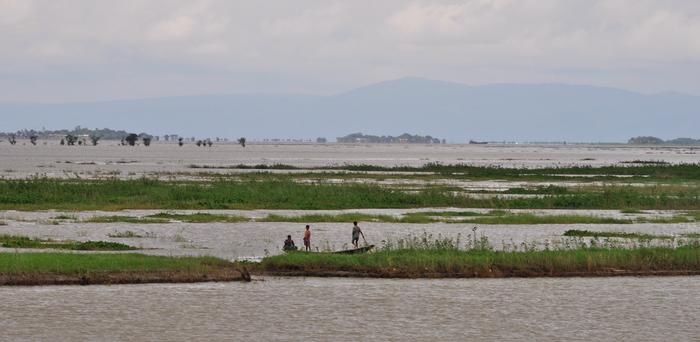A massive earthquake that struck 2,500 years ago caused one of the world’s largest rivers, the Ganges, to abruptly change course, according to a new study published in the journal Nature Communications. The previously undocumented quake rerouted the main channel of the river in what is now densely populated Bangladesh, a region that remains vulnerable to powerful earthquakes.
Michael Steckler, a geophysicist at Lamont-Doherty Earth Observatory, part of the Columbia Climate School, and a coauthor of the study, emphasized the scale of the event. “I don’t think we have ever seen such a big one anywhere,” he said, noting that it could have easily inundated anyone and anything in its path.
Earthquakes Can Trigger Sudden River Course Changes
While scientists have documented many river course changes, known as avulsions, including some in response to earthquakes, this study provides the first confirmation that earthquakes can drive avulsion in deltas, even for a massive river like the Ganges, according to lead author Liz Chamberlain, an assistant professor at Wageningen University in the Netherlands.
The Ganges, which rises in the Himalayas and flows for some 1,600 miles, combines with other major rivers to form the world’s second-largest river system by discharge. Like other rivers in major deltas, the Ganges periodically undergoes minor or major course changes without any help from earthquakes. However, an earthquake-related avulsion can occur much more suddenly than the gradual process of sediment buildup and eventual breakthrough that typically causes these changes.
Evidence of Ancient Earthquake Found in Bangladesh
The researchers discovered evidence of the ancient earthquake while exploring a low-lying area in Bangladesh, where they spotted distinct vertical dikes of light-colored sand cutting through horizontal layers of mud in a freshly dug excavation. These features, called seismites, are created by earthquakes when sustained shaking pressurizes buried layers of sand, injecting them upward through overlying mud.
Further investigation, including chemical analyses of sand grains and mud particles, revealed that the seismites and the abandonment and infilling of the channel all occurred around 2,500 years ago. The authors concluded that this was a large, sudden avulsion triggered by an earthquake, estimated to be magnitude 7 or 8.
The quake could have originated from either a subduction zone to the south and east or giant splay faults at the foot of the Himalayas to the north. A 2016 study led by Steckler shows that these zones are now building stress and could produce earthquakes comparable to the one 2,500 years ago, potentially affecting 140 million people in the region.
The Ganges is not the only river facing such hazards; other tectonically active deltas, such as those of the Yellow River in China, the Irrawaddy in Myanmar, and the Jordan spanning the borders of Syria, Jordan, the Palestinian West Bank, and Israel, also face similar risks.
For more information on the study and its implications, explore the following resources:


